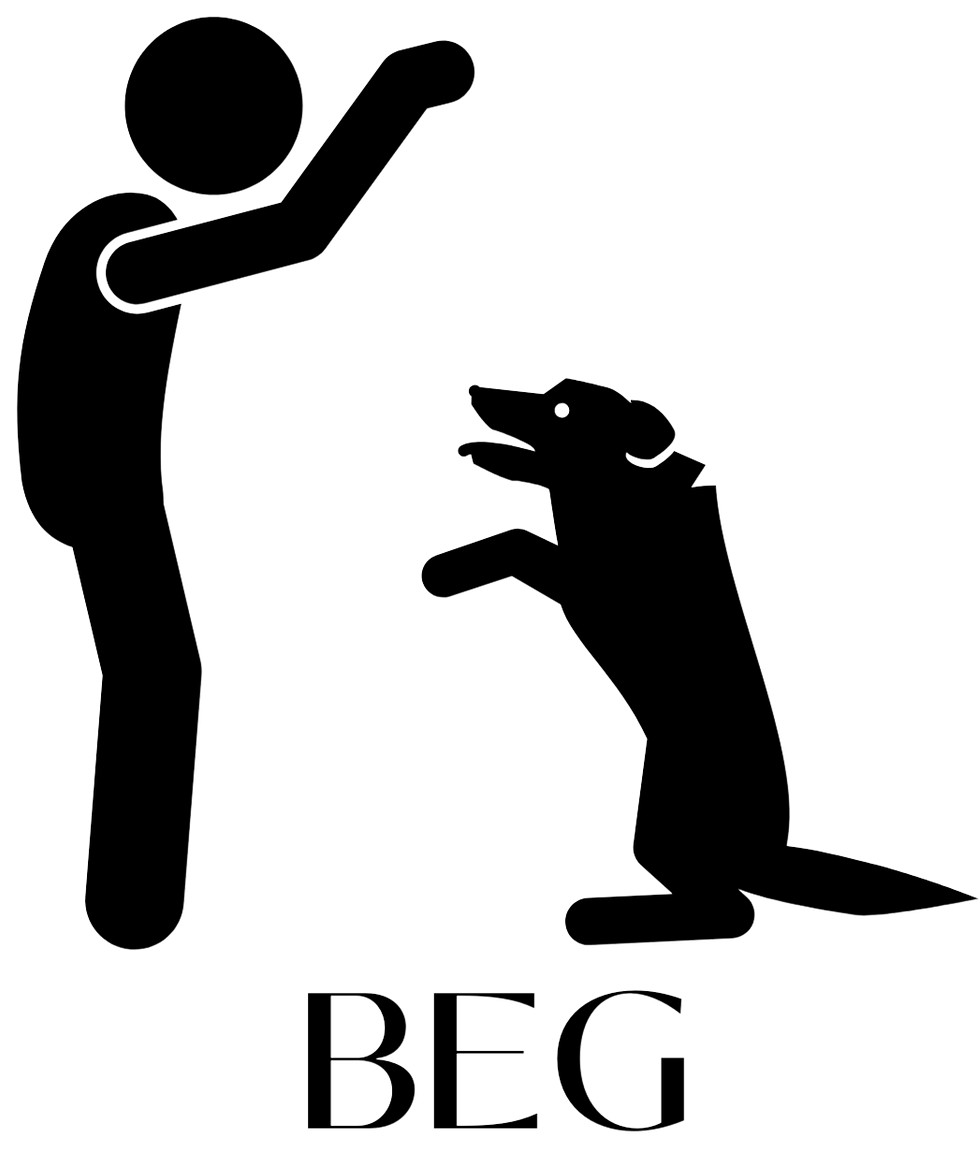How to Trick Train Your Bernedoodle
- Samantha

- Aug 22, 2024
- 7 min read
Hey there, fellow dog lovers! It's Down Home Doodle, back with another helpful Blog Post! If there's one thing I've learned from my Bernedoodle pals, it's that training isn't just about commands—it's about unleashing the joy of learning together! From the hilarious moments of trial and error to the heartwarming victories, training your furry friend is a journey filled with tail wags and high fives. So, grab those treats and get ready for a paw-some adventures as we dive into the world of training with our four-legged besties!

Here’s 3 Ways Trick Training Boosts Your Dog's Life
Strengthen Your Bond: Spending time teaching your Bernedoodle tricks deepens your connection and improves obedience.
Teach Patience: Through repetition, your dog learns to wait patiently for rewards, building their patience skills.
Burn Excess Energy: For hyperactive dogs, trick training provides mental stimulation and a way to channel their energy positively, reducing destructive behaviors.
Before you begin, remember:
When it comes to trick training your Bernedoodle, using the right treats can make all the difference in keeping your pup motivated and focused. High-value treats, like those from Down Home Dog Treats, are perfect for rewarding your Bernedoodle during training sessions. These treats are not only delicious but also approved by our family pets and members of our Down Home Doodle Training Program, making them ideal for keeping your furry friend interested and excited about learning new tricks. Whether you're teaching basic commands or advanced tricks, having the right treat in hand will help your Bernedoodle stay engaged and eager to please.
COMMANDS & TRICKS
SIT

Setting the Stage:
Place your foot on your Bernedoodle's leash to limit movement.
Ensure there's enough space for your dog to sit comfortably but not jump up.
Starting the Training:
Hold a treat above your dog’s head to encourage them to sit naturally.
As they move into the sitting position, say “sit” clearly.
Repetition and Reward:
Repeat the process consistently.
Reward your dog with treats or praise each time they successfully sit on command.
Continue practicing until your Bernedoodle reliably responds to the "sit" command.
STAY

Teaching "Stay":
Once your Bernedoodle masters the "sit" command, introduce the "stay" command.
Use a stern vocal cue such as "stay" while simultaneously gesturing with a raised hand or flat palm.
Start with short durations and gradually increase the time your dog must stay in the sitting position.
Reward your dog for maintaining the stay position. Repeat as needed.
SHAKE

Ensure your Bernedoodle knows the "sit" command and can stay in the sitting position.
Have treats ready to reward their progress.
Getting Started:
Begin with your Bernedoodle in the sitting position.
Hold a treat in your closed hand and wait for them to sniff or paw at it.
Reward them for any paw movement towards your hand.
Progression:
Once your Bernedoodle consistently reaches for the treat, progress to them lifting their paw to shake hands.
Reward them each time they lift their paw, reinforcing the behavior.
Verbal Cue:
Introduce a verbal cue such as "Shake" or "Paw" while offering your hand.
Say the command clearly and consistently to associate it with the action.
Gesture Cue:
Offer your hand, palm up, as a visual cue.
Simultaneously say the verbal command to reinforce the desired behavior.
Reinforcement:
Only reward your Bernedoodle once they've learned to keep their paw in your hand without pawing.
This prevents them from confusing shaking with pawing for treats.
Consistency and Patience:
Practice the "Shake" command regularly in short training sessions.
Be patient and positive, celebrating each milestone along the way.
FETCH

Getting Started:
Begin in a familiar, enclosed area with minimal distractions.
Choose a favorite toy or ball that your Bernedoodle enjoys chasing and retrieving.
Training Steps:
Start with short distances for throws, ensuring success and building confidence.
Encourage your Bernedoodle to chase after the toy or ball by tossing it a short distance.
Use a clear verbal cue such as "Fetch" to indicate the desired action.
Provide a gesture cue by pointing to the object you want them to retrieve, reinforcing the command visually.
When your dog retrieves the object, praise and reward them with a treat or enthusiastic praise.
Progression:
Gradually increase the length of your throws as your dog becomes more proficient.
Maintain enthusiasm and positivity throughout the training sessions.
Reinforcement:
Consistently use the verbal and gesture cues to reinforce the fetch command.
Reward your dog for successful retrieves to strengthen the desired behavior.
Patience and Persistence:
Be patient and understanding, especially if your dog takes time to grasp the concept.
Practice regularly, keeping sessions short and enjoyable for your dog.
SPEAK & QUIET

Teaching your dog to speak and be quiet on command is a valuable skill that allows you to communicate effectively with your furry friend. By capturing their natural barking behavior, you can associate it with the "speak" command and reward them for stopping with the "quiet" command.
Getting Started:
Observe your dog's natural barking behavior and wait for a moment when they bark.
Capture the bark by issuing a verbal cue such as "Speak" and simultaneously pointing to your mouth as a gesture cue.
Reward your dog immediately after they bark with enthusiasm and a treat.
As you move forward with your training, be sure to mark a single bark at a time so your dog does not get the impression that you are rewarding them for barking wildly.
Training Steps:
Once your dog understands the "speak" command, introduce the "quiet" command.
When your dog barks, issue the "quiet" command in a calm but firm tone.
Make a calming gesture, such as placing your finger to your lips, to reinforce the command visually.
Reward your dog for stopping barking with praise and treats.
Gradually increase the duration of silence before rewarding to reinforce the behavior.
Progression:
Practice the "speak" and "quiet" commands in various environments to generalize the behavior.
Be consistent with your cues and rewards to ensure clarity for your dog.
BACK UP

The "Back up" command is valuable for getting your dog to move away from you, preventing them from being under your feet and ensuring safety.
Training Steps:
Start with your dog in the stay position.
Turn and move away from them, then face back towards them.
Walk towards them, leaning your body forward.
Most dogs will naturally back up as you approach.
Issue a verbal cue or hand signal to guide them in moving backward.
Practice and Patience:
Practice the "Back up" command regularly in short sessions.
Be patient and encouraging as your dog learns the new skill.
BEG

The "Beg" command is a cute trick that involves your dog sitting up on their hind legs, creating an adorable pose.
Training Steps:
Start with your dog in the sitting position.
Hold a treat up to their face, enticing them to reach for it.
Slowly raise the treat above their head, encouraging them to lift their front paws off the ground.
Say "beg" or "paws up" as a verbal cue while they are in the desired position.
With patience and positive reinforcement, your dog will learn to beg on command, delighting you and others with their adorable pose.
PLAY DEAD

Training Steps:
Make sure your dog knows the commands "lie down" and "stay" before teaching them to play dead.
Command your dog to lie down using the verbal cue and hand signal they already know.
Hold a treat between your fingers and lure your dog to roll over onto their side while keeping their attention on the treat.
Reward your dog with the treat and verbal praise when they are lying on their side correctly.
Repeat the action, gradually shaping their behavior until they can play dead on command.
Verbal and Gesture Cues:
Use the verbal cue "Play Dead" to signal the desired action.
Extend your arm and lower it like a falling tree as a gesture cue to accompany the verbal command.
ROLL OVER

"Roll Over" is a playful trick that can be broken down into smaller steps for easy learning.
Training Steps:
Be sure your dog knows how to sit and lie down before starting the “roll over” training.
Place a treat close to your dog's nose to grab their attention.
Use a circular motion with your hand as a gesture cue while saying "Roll Over."
Guide your dog to roll onto their side by moving the treat in a circular motion.
Continue rotating the treat, encouraging your dog to roll completely over.
Reward each successful attempt with treats and verbal praise.
Reinforcement:
Break down the trick into smaller steps, rewarding your dog for each successful attempt.
Use treats and verbal praise to encourage your dog throughout the training process.
Verbal and Gesture Cues:
Use the verbal cue "Roll Over" to signal the desired action.
Accompany the verbal cue with a circular motion of your hand to reinforce the command visually.
JUMP THROUGH A HOOP

As we get to the bottom of this list of treats, let's end it with a fun one!
Training Steps:
Introduce the hoop as a fun toy to your dog, allowing them to investigate it.
Gradually incorporate the hoop into the trick by holding it low to the ground.
Use treats to lure your dog through the hoop, rewarding each successful attempt.
Gradually raise the hoop higher, rewarding your dog for jumping through at each level.
Reinforcement:
Use treats and verbal praise to encourage your dog throughout the training process.
Reinforce the desired behavior by rewarding successful attempts.
Verbal and Gesture Cues:
Use the verbal cue "Jump" or "Hoop" to signal the desired action.
Hold the hoop and encourage your dog to jump through, using it as a gesture cue.
Teaching your dog these tricks not only boosts their smarts but also strengthens your bond. Remember, patience, consistency, and positivity are key. Enjoy unlocking your dog's talents and making memories together!
Socializing your puppy is just as important as training. Exposing them to a variety of people, places, and experiences is crucial for their development. This helps them grow into well-adjusted, confident dogs that are comfortable in different environments. A well-socialized puppy is less likely to develop behavioral issues and more likely to adapt to new situations with ease. For more tips on both socializing and training your puppy, check out our other blog posts!









Comments